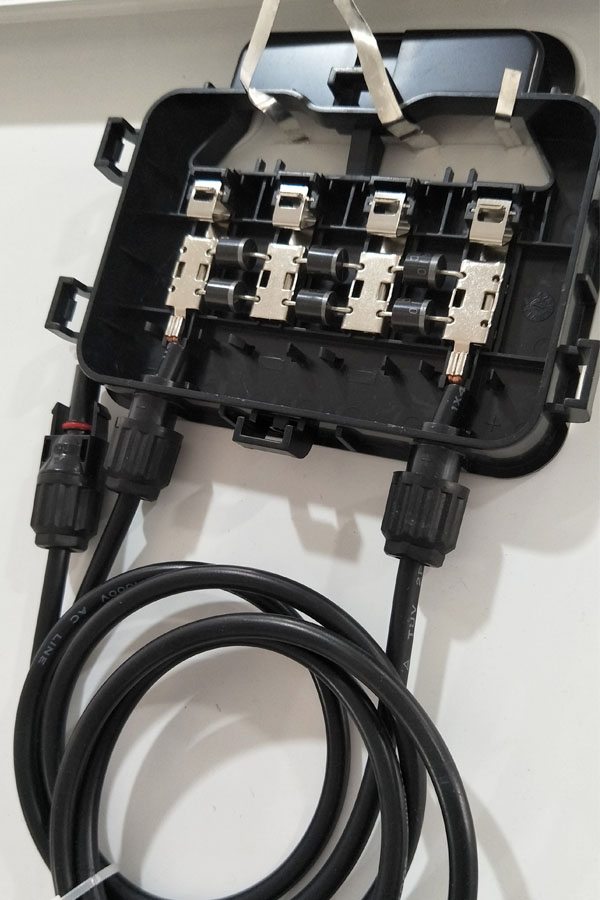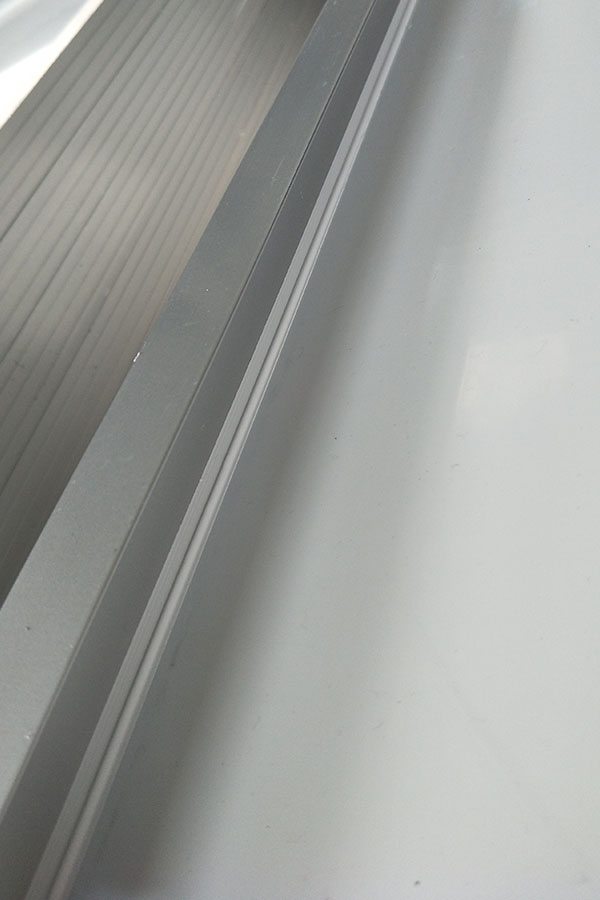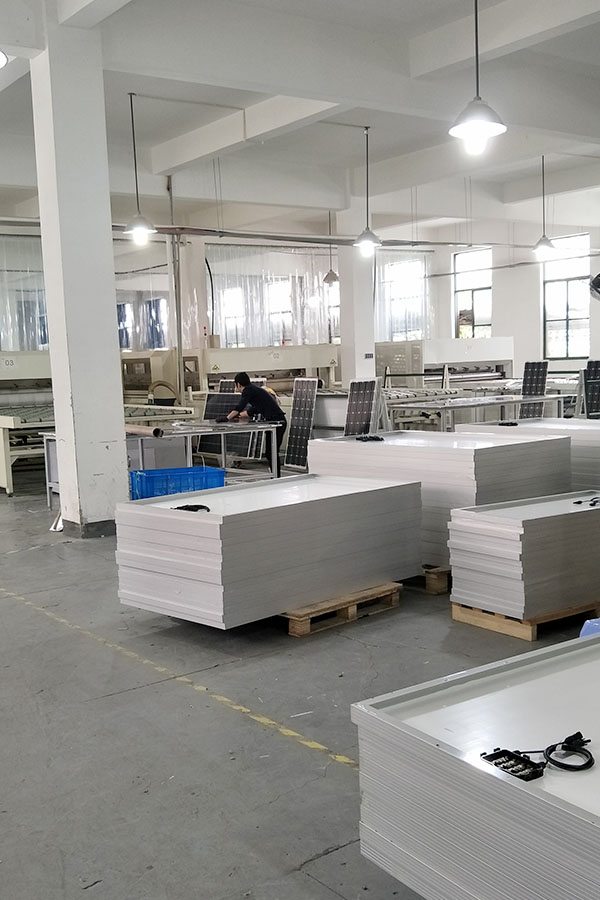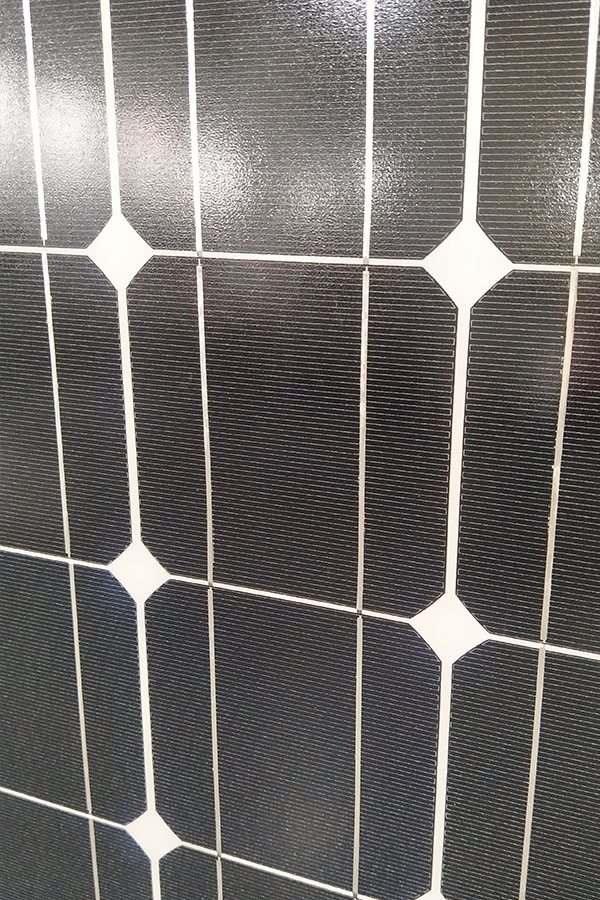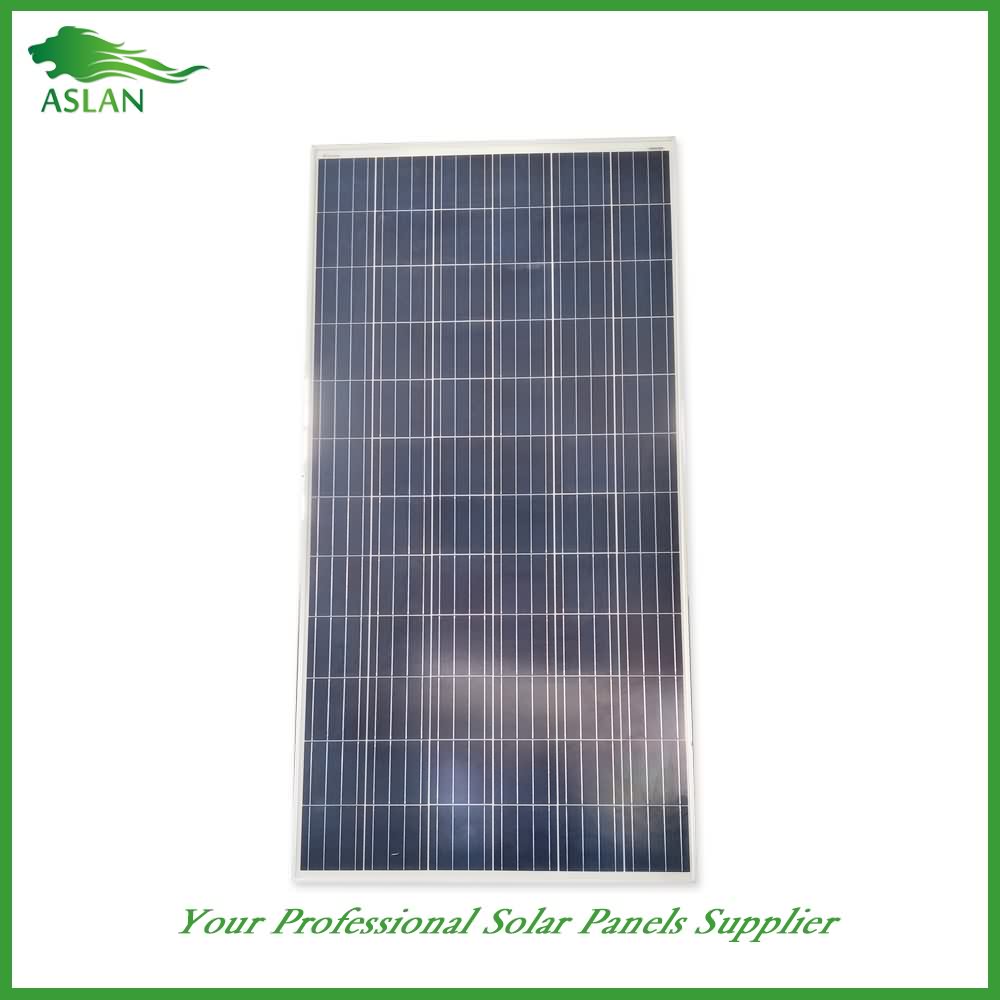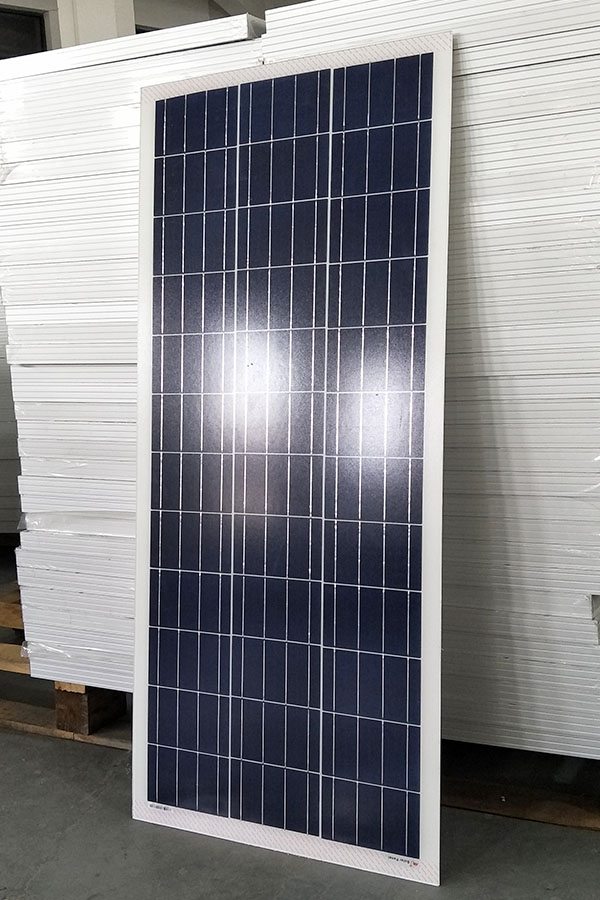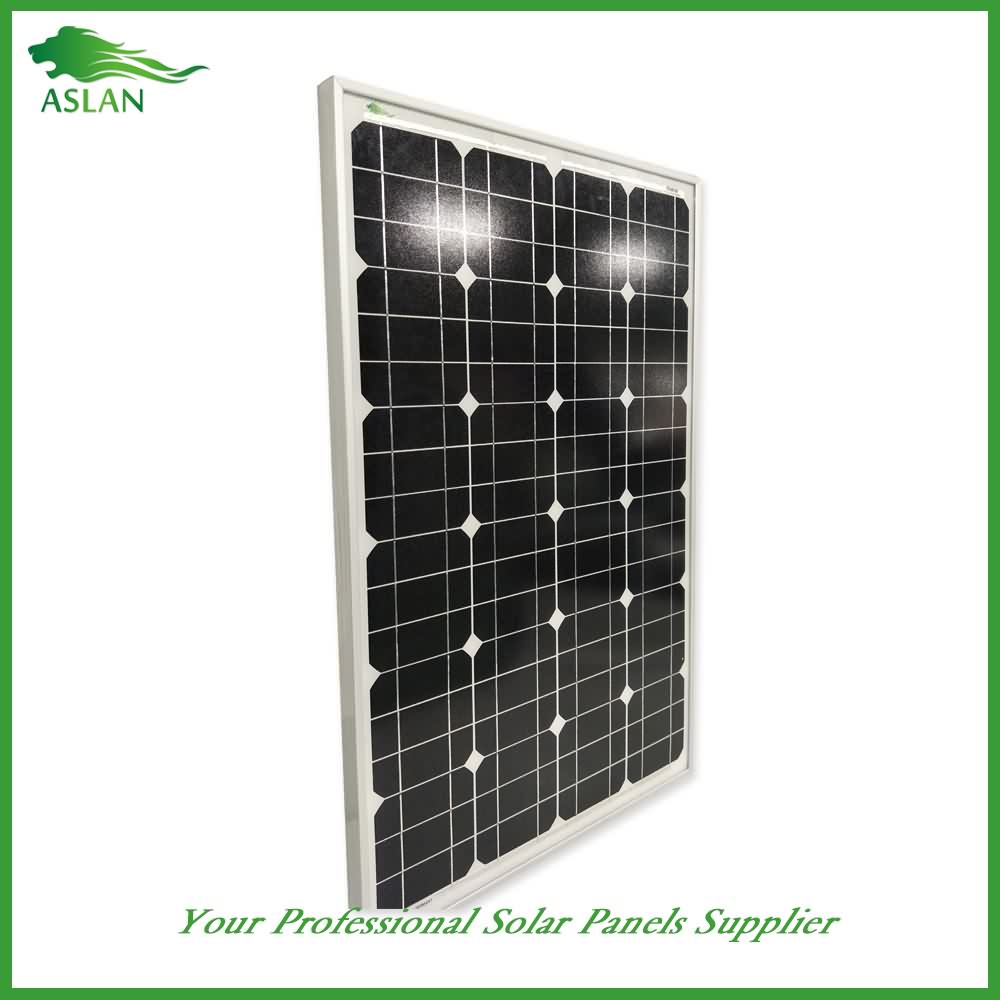5 Years Factory Mono-Crystalline 180W Solar Panel Wholesale to Nepal
Short Description:
To be the stage of realizing dreams of our employees! To build a happier, more united and more professional team! To reach a mutual benefit of our customers, suppliers, the society and ourselves for 5 Years Factory Mono-Crystalline 180W Solar Panel Wholesale to Nepal, For further information, please do not hesitate to contact us. All inquiries from you will be highly appreciated.
Mono-Crystalline 180W Solar Panel
Technical parameter
Maximum Power(W) 180W
Optimum Power Voltage(Vmp) 36.42V
Optimum Operating Current(Imp) 4.96A
Open Circuit Voltage(Voc) 44.45V
Short Circuit Current(Isc) 5.44A
Mechanical Characteristics
Cell Type Mono-crystalline 125x125mm (5 inch)
No of Cell 72 (6x12pcs)
Dimensions 1580x808x35mm
Weight 14.5Kg
Front Glass 3.2mm,High Transmission, Low Iron,Tempered Glass
Junction box IP65 Rated
Output Cable TUV 1×4.0mm2/UL12AWG,Length:900mm
Temperature and Coefficients
Operating Temperature(°C): -40°C ~ + 85°C
Maximum System Voltage: 600V(UL)/1000V(IEC) DC
Maximum Rated Current Series: 15A
Temperature Coefficients of Pmax: -0.47%
Temperature Coefficients of Voc: -0.389%
Temperature Coefficients of Isc: 0.057%
Nominal Operationg Cell Temperature (NOCT): 47+/-2°C
Materials of solar panel
1).Solar Cell——Mono-crystalline solar cell 125*125mm
2).Front Glass——-3.2mm, high transmission, low iron, tempered glass
3).EVA——-excellent anti-aging EVA
4).TPT——-TPT hot seal made of flame resistance
5).Frame——anodized aluminum profile
6).Junction Box——-IP65 rated, high quality, with diode protection
Superiority: high quality anodized aluminum frame, high efficiency long life, easy installation, strong wind resistance, strong hail resistance.
Features
1. High cell efficiency with quality silicon materials for long term output stability
2. Strictly quality control ensure the stability and reliability, totally 23 QC procedures
3. High transmittance low iron tempered glass with enhanced stiffness and impact resistance
4. Both Poly-crystalline and Mono-crystalline
5. Excellent performance in harsh weather
6. Outstanding electrical performance under high temperature and low irradiance
Quality assurance testing
Thermal cycling test
Thermal shock test
Thermal/Freezing and high humidity cycling test
Electrical isolation test
Hail impact test
Mechanical, wind and twist loading test
Salt mist test
Light and water-exposure test
Moist carbon dioxide/sulphur dioxide
Check out our new channel with interesting facts: https://www.youtube.com/c/seosantv [Top Truths]
If Alien exist where do they live and how do they live?
Scientists say a world that’s 490 light-years away qualifies as the first confirmed Earth-sized exoplanet that could sustain life as we know it — but in an environment like nothing we’ve ever seen.
http://www.advexon.com
The planet, known as Kepler-186f, is “more of an Earth cousin than an Earth twin,” Elisa Quintana, an astronomer at the SETI Institute at NASA Ames Research Center, told the journal Science. Quintana is the lead author of a report on the planet published by Science this week.
“This discovery does confirm that Earth-sized planets do exist in the habitable zones of other stars,” Quintana said during a Thursday news briefing at NASA Headquarters.
Kepler-186f goes around an M-type dwarf star that’s smaller and cooler than our sun. But it orbits much closer to its parent star than Earth does, within what would be Mercury’s orbit in our own solar system. Those two factors combine to produce an environment that could allow for liquid water on the surface, assuming that the planet had a heat-trapping atmosphere.
“The star, to our eyes, would look slightly orange-y,” about a third again as big as our sun but only a third as bright, said co-author Thomas Barclay, a staff scientist for NASA’s Kepler mission who is also affiliated with NASA and the Bay Area Environmental Research Institute. At midday, Kepler-186f’s landscape might look similar to what we see on Earth an hour before sunset, he told NBC News.
Or it might not: If the planet lacked an atmosphere to retain and redistribute its sun’s warmth, it would be a cold, dry, lifeless world.
Kepler-186f probably rates as the most potentially Earthlike planet discovered so far, said Jim Kasting, a geoscientist at Penn State University who did not play a role in the Science study. But he told NBC News that it’s still “less likely to be habitable than planets around more sunlike stars.” Even better prospects for alien habitability might well be identified in the months and years to come.
How the world was found
Kepler-186f is just the latest discovery to be pulled out of terabytes’ worth of data collected by the Kepler mission. Before it went on the fritz last year, the Kepler space telescope stared at more than 150,000 stars in a patch of sky, looking for the telltale dimming of starlight as planets passed over the stars’ disks. Nearly 1,000 exoplanets have been confirmed using Kepler data, and almost 3,000 more candidates are still awaiting confirmation.
It takes years of observation to confirm the pattern of dimming and brightening that’s associated with alien planets, particularly if the planets are small and far from their parent stars. In February, astronomers reported that at least four worlds circled the dwarf star known as Kepler-186 or KOI-571. In this week’s Science paper, Quintana and her colleagues confirm the existence of Kepler-186f as the fifth and outermost world.
They report that Kepler-186f is about 10 percent wider than Earth, tracing a 130-day orbit around its sun at a mean distance of 0.35 astronomical units. (An astronomical unit is the distance between Earth and our sun, which is 93 million miles or 150 million kilometers.) That would put Kepler-186f on the cooler, outer side of the star’s habitable zone — the range of orbital distances where liquid water could exist on a planet’s surface.
Astronomers have confirmed the existence of other planets in their stars’ habitable zone, but those prospects are super-Earth-size. Smaller habitable-zone candidates also have been found, but they have yet to be confirmed as planets.
Barclay said Kepler-186f was particularly promising because it’s less than 1.5 times the size of Earth. Planets in that size range are more likely to be rocky with a thinner atmosphere, like Earth, Mars and Venus. But worlds exceeding that size stand a better chance of retaining a thick atmosphere of hydrogen and helium, like the giant planet Neptune.
“While those planets also could be rocky, they don’t remind us of home,” Barclay said.
Could we actually detect signs of life on Kepler-186f? That’s a tough one. The astronomers behind the discovery acknowledge that the planet might be just too far away for follow-up studies. The SETI Institute has been searching for radio signals from the Kepler-186 system over a wide frequency range (1 to 10 GHz), but so far nothing has been detected.
Kasting, the author of “How to Find a Habitable Planet,” said worlds around M-class dwarf stars faced several disadvantages in the habitability department. For one thing, such planets generally end up being tidally locked to their stars — meaning that one side of the planet is always facing its parent sun while the other is always turned away.
In this video I drew up how my current small solar system is wired. I plan to show actual installation of more solar panels onto this system at a later time. Thanks for watching. Also check out these youtube channels.
https://www.youtube.com/user/mx6maximus/videos
https://www.youtube.com/user/drgonzo7806/videos?sort=dd&view=0&shelf_id=0
https://www.youtube.com/channel/UCHTZrrB2YjWCPUyaDBNCdBA/videos?sort=dd&view=0&shelf_id=0

